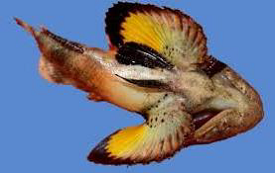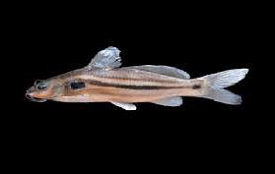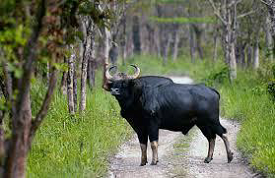
- Appointments
- Awards
- Bills & Acts
- Books & Authors
- Committees
- Deaths
- Defence
- Economic
- Environment
- Finance
- Important Days
- International
- Miscellaneous
- National
- Persons in News
- Places in News
- Regional
- Reports
- Resignations & Retirements
- Science & Technology
- Sports
- June 2020 - Exams Resources
- Current Affairs - Quiz
- Current Affairs - Test
- Current Affairs - PDF
Current Affairs June 2020 - Environment
1 - Cyclone Nisarga: Key Points

The Nisarga Cyclone had formed following the low-pressure area over the Southeast and East-central Arabian Sea and Lakshadweep area. The name Nisarga has been suggested by Bangladesh. As per the India Meteorological Department, the impact of the cyclone is likely to be felt in Maharashtra and Gujarat.
Doppler Weather Radars (DWRs) at Mumbai and Goa were used to track the cyclonic storm. Earlier, super cyclone Amphan had hit West Bengal, Odisha and Bangladesh.
2 - Rare bandtail scorpionfish found in Gulf of Mannar

Researchers at the Central Marine Fisheries Research Institute (CMFRI) have found a rare fish from Sethukarai coast of Tamil Nadu in the Gulf of Mannar. The band-tail scorpionfish (Scorpaenospsis neglecta) was for the first time found live in the Indian waters.
The fish is known for the stinging venomous spines and the ability for changing colour. The fish is called scorpionfish because its spines contain neurotoxic venom. It uses its lateral sensory system instead of eyes to hunt its prey.
3 - Amery Ice Shelf increased by 24% by 2021

The National Centre for Polar and Ocean Research predicted that the Amery Ice Shelf is to expand 24% by 2021. The prediction made by NCPOR is based on a 16-year-long satellite-based observation that covered an area of 60,000 sq km across the AIS.
The Ameri Ice Shelf (AIS) is one of the largest glacier drainage basins in the world, located on the east coast of Antarctica. The floating sheets of ice called ice shelves play a multi-faceted role in maintaining the stability of a glacier. Ice shelves connect a glacier to the landmass.
4 - Population of Asiatic Lions in Gir Forest grow by 29%

According to the Gujarat Forest Department, the population of the majestic Asiatic Lion in Gir Forest has increased by 28.87% to 674. The area inhabited by lions has increased by 36% from 22,000 sq km in 2015 to 30,000 sq km in 2020. The population of 674 comprised 161 males, 260 females, 116 sub-adult lions and 137 cubs.
As per the May 2015 census, there were 523 Asiatic lions in Gir, an increase of 27% from 2010. For the population estimates, the Forest Department used the Direct Beat Verification method, also known as Block Count Method.
5 - Brazil's Amazon rainforest reported highest deforestation in 5 years

Amazon rainforest witnessed highest level of deforestation in 5 years, of a record 829 sq km in May, the highest monthly level since 2015. It has been estimated that destruction of the forest by illegal loggers and ranchers rose by 55%. The deforestation in the Amazon increased by 91 sq km compared to last year.
The Amazon rainforest is the largest rainforest in the world, covering an area of 5,500,000 sq km. Amazon Environmental Research Institute (IPAM) warned that deforestation in 2020 could reach 11,900 sq km.
6 - New fish species discovered in Arunachal Pradesh

A new species of fish has been discovered in Arunachal Pradesh. Dr. Keshav Kumar Jha, Associate Professor & Head, Department of Zoology, Jawaharlal Nehru College, Pasighat discovered a new fish species from genus Schizothorax.
The fish species is named as Schizothorax sikusirumensis. The name of this fish species has been derived from the name of the rivers where it was found. It inhabits the water logged area of torrential river drainage.
7 - Indian Gaur or Bison (Bos gaurus) facing Mutation

Scientist unveiled that rare genetic condition of leucism is observed in Indian Gaurs. Leucism causes partial loss of pigmentation in the skin pattern of the animal. This is not good for the animals as leucism might compromise the immune system of the animals and reduce their survival rates
The Indian Gaur or Bison (Bos gaurus) is the largest and the tallest in the family of wild cattle and is a grazing animal. Gaurs live in the wild and face an increasing threat of extinction.
8 - Stegodon Fossil discovered from Saharanpur estimated to be 5 to 8 Million Years Old

A joint team of forest officials and wildlife organization World Wide Fund for Nature (WWF) discovered Stegodon Fossil from Saharanpur. It is estimated to be 5 to 8 million years old. Stegodon is a variety of the elephant fossil which used to be found at an early age.
The fossil is from Dhok Pathan formation of Siwalik sediments exposed in the vicinity of Badshahi Bagh area in Uttar Pradesh's Saharanpur. This fossil is a middle-age deposition.
9 - 68 Million Years Old Egg discovered from Antarctica

Scientists discovered 68-million-years old egg on Seymour Island off Antarcticas coast. It is called Antarcticoolithus bradyi and belongs to Late Cretaceous period. This giant soft-shelled egg looks like a deflated football.
This newly discovered egg is smaller only than that of the extinct elephant bird, which looked like an enormous ostrich. It might have belonged to a huge marine reptile that lived alongside the dinosaurs. Mosasaurs are an extinct species of large marine reptiles that lived in the dinosaur era in Antarctica.